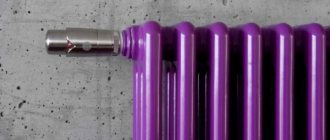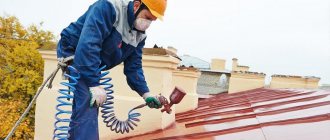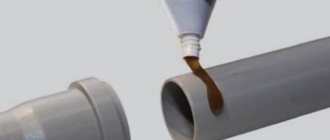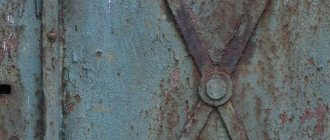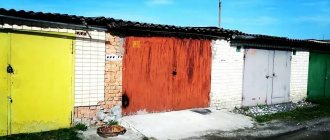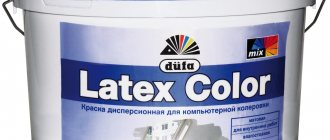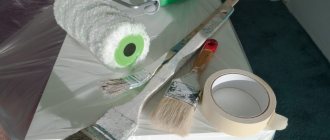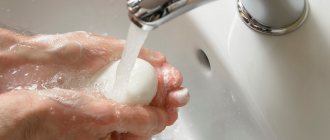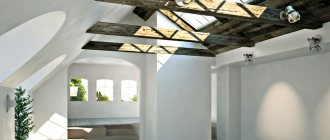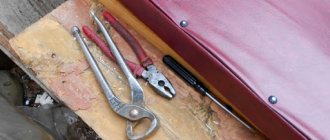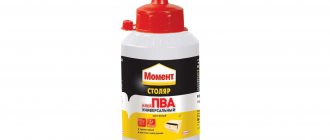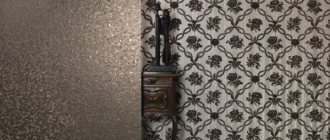Painting chimneys is a necessary requirement, since flue gases are constantly released through them and are exposed to various negative factors - both external and internal (moisture, precipitation, etc.). Without proper care and timely repairs, the structure may become unusable, which will require the installation of a new one.
Painting chimneys is not an easy task.
COST OF PAINTING WORK
The cost of painting chimneys in Moscow and the Moscow region may depend on a large number of factors, such as the material of the pipe trunk, design features, purpose of the pipe, its height and location. Cost assessment is carried out during inspection by a specialist directly on site.
We pay special attention to the choice of compounds that we use for painting pipes. The materials applied to the outer surface of the chimney determine how long the chimney will not require partial or complete repair and new painting.
If you do not care for the chimney or do it incorrectly, this leads to accelerated corrosion and deformation of the pipe, the chimney fails and cannot perform its functions.
Step-by-step instructions for painting a chimney
For work you will need the following tools and materials:
- brushes or rollers for painting;
- metal brush for cleaning the surface;
- acetone or other degreasing liquid;
- primer;
- paint and varnish composition suitable for the chimney material.
For chimney painting to be effective, the following steps must be followed:
- Calculation of the area to be painted. This step is necessary to calculate the amount of materials needed.
- Cleaning up. It is necessary to remove from the base anything that can interfere with painting and also affect the quality of work: old paint, grease, dirt, etc.
- Primer. Needed for better adhesion of paint to the surface.
Painting is the final stage at which the paint coating is applied. If marking coloring is necessary, you should be guided by the following standards corresponding to paragraph 1 of Art. 51
Air Code of the Russian Federation:
- Pipes with a height of up to 100 m are painted with horizontal stripes from 0.5 m to 6 m of white and red colors (at least there must be 3 stripes).
- For structures over 100 m, the size of the strips should be from 1/7 to 1/21 of the entire height of the object. The outer stripes should be red.
Colors for painting chimneys.
The paint is applied in 2-3 layers so that the thickness is 40-60 microns. The consumption for 1 layer of coating is 120-150 g/m².
Pay attention to: Simple, cheap and beautiful - coffee tinting of fabric
Metal surfaces
Metal pipes are usually made of stainless steel, which is least susceptible to corrosion. However, any structure must be prepared before painting, otherwise painting on metal will not last long enough.
The work is as follows:
- Use a wire brush to remove dirt and old paint.
- Wash thoroughly and dry the base.
- Treat with a degreaser.
- Apply a corrosion inhibitor mixture.
- Cover with 2-3 layers of primer.
- The last stage is coloring. It is better to paint along the perimeter from top to bottom.
The main thing is the anti-corrosion coating, which increases the service life of the structure. Also important is the treatment of sealing seams - in these places the pipes are most susceptible to destruction.
Brick chimneys
Brick is used less frequently for construction. But such structures still exist.
Work algorithm:
- It is worth tightening the bolts on the connecting clamps.
- Remove traces of old stains.
- Wash off dirt.
- Restore the plaster if there is damage.
- Apply primer (2 layers or more).
- After drying, you can start painting. It is worth applying 2 layers of paint to the brick to make it stronger and brighter.
Ceramic pipes
The most heat-saving option for building chimneys is ceramic structures. They consist of a ceramic pipe, an insulating layer and metal or foam concrete layers.
The technology for painting a ceramic pipe depends on what the insulation layer is covered with:
- foam concrete should be painted in the same way as brick: clean, wash, restore damage (if any), apply primer and paint;
- the metal layer is processed according to the scheme for painting a metal pipe: cleaning, anti-corrosion composition, primer and painting itself.
Pay attention to: How to dye a down jacket at home
Here you can choose a paint with a lower coefficient of resistance to high temperatures (since the insulating layer that is part of the structure reduces it).
Stages of pipe painting work:
- on-site inspection of the facility by specialists
- work planning, coordination with the customer
- preparation of materials, equipment, equipment
- installation of climbing equipment
- preliminary cleaning of the pipe surface
- repair of cracks, crevices, crumbling layers of plaster
- primer for problem areas
- two-layer pipe painting
When painting chimneys, two colors are used - red and white. This color option is the generally accepted standard for identifying objects of special attention.
Inner surface of the pipe
The inside of the chimney should also be checked: repairs may be required. If problems are found on the internal surface, we will fix them.
Painting brick pipes
The brickwork of the smoke exhaust pipe shaft is subject to the influence of precipitation, cold, heat and other unfavorable external and internal factors (high smoke temperature, smoke composition). Chimney bricks without proper care crumble very quickly, the masonry becomes uneven and unsuitable for the safe operation of the chimney. Such pipes pose a danger to surrounding buildings and the environment as a whole.
Because of these features, before painting industrial brick pipes, it is necessary to carry out work to fill voids and cracks with mortar. These actions stop destructive processes when the work is done on time and with proper quality.
Painting metal chimneys
Before painting metal pipes, the surface is thoroughly cleaned and pre-treated, where primer, paint and anti-corrosion compounds are supposed to be applied. Old crumbling and poorly secured layers of paint and primer must be removed.
ALP-CITY.RF specialists select the optimal method for preparing pipes for painting. Properly selected technologies and materials can reduce the cost of painting metal chimneys by up to 30%.
What paint is suitable
Conventional paints and varnishes cannot be used for potbelly stoves. Fuel (wood, coal) burning inside the structure creates temperatures reaching 1000 C. Traditional oil paint under such conditions will bubble and peel off.
When choosing enamels and varnishes for metal stoves, pay attention to heat resistance. The characteristic indicates maximum heat resistance during operation. The instructions should contain values in the range of 600-1000 C. The heat resistance parameter determines the ratio of the paintwork to the temperature in the range of 200-600 C, which is suitable for radiators, but not for potbelly stoves.
Painting a potbelly stove Source fasaddomstroy.ru
Paint for metal stoves should not be afraid of moisture. The water-repellent properties of the raw materials will protect the structure from corrosion when used in a bathhouse or outdoors. A plus will be additives against temperature changes and the possibility of use in frosty conditions.
Paint for potbelly stoves must be safe. The heat in the metal furnace near the coating provokes the release of chemical fumes. If the material is made from toxic ingredients, then such a device threatens the life and health of others. The use of toxic paints and varnishes in enclosed spaces (bathhouse, garage) is especially dangerous.
Types of paints
Heat-resistant coatings for potbelly stoves should be strong, durable and easy to use. The products can be bought ready-made at a hardware store or made from scrap materials. Let's look at the main types of paints and varnishes for metal furnaces.
Homemade options
Heat-resistant silver enamel is created from a substance known as “liquid glass”. The label says potassium silicate. When frozen, the product has high mechanical strength and resistance to extreme temperatures, which is important for potbelly stoves.
Add 500 g of aluminum powder to 1 liter of liquid substance. If you need a smaller amount of paint, then take a tablespoon of powder per 100 ml of glass. Gently mix both ingredients, avoiding the formation of lumps. The components should be combined in a bottle and shaken thoroughly.
Painting of reinforced concrete pipes
Reinforced concrete chimneys require a lot of preliminary work when painting. First, industrial climbers clean the outer surface of the pipe from various types of contaminants and remove all possible delaminations. Chips and cracks are covered with injection materials to strengthen and seal. If areas with concrete corrosion are detected, treatment with special anti-corrosion compounds is required.
After preliminary restoration and treatment of the concrete layer, the pipe is painted with a special paint.
The choice of primers, paints and other materials is a task for a specialist
When choosing a paint and varnish material, it is important to correctly take into account its vapor permeability. The permeability index should not be lower than the vapor permeability of the smoke exhaust pipe itself. Otherwise, the pipe trunk and its coating quickly become oversaturated with aggressive elements, and this leads to the destruction of the outer coating and the chimney body itself.
It is also imperative that all products used when painting the entire chimney structure must be resistant to high and low temperatures. ALP-SITY.RU high-altitude masters work only with modern, proven compounds (soil, paint, other materials).
Causes of wear and tear on chimneys
There are a large number of reasons that lead to wear and tear of the chimney.
- corrosion that occurs due to the impact of combustion products and flue gases on the masonry and other materials of the chimney;
- wind, humidity, precipitation, excessive heat;
- shortcomings in the design and construction of the pipe itself;
- unqualified intervention in the chimney system;
- when using the structure for other purposes, for example, when connecting artificial ventilation, the risk of destruction of the chimney increases;
- transition from one type of fuel to another;
- technologies, including “wet cleaning”, aimed at protecting nature;
- strong air injection from the boiler.
When using metal elements during construction, erosion may occur, which is also caused by unfavorable meteorological factors.
Marking painting of chimneys
Chimneys for industrial use can have a significant height; depending on the type of structure and their purpose, industrial chimneys can reach hundreds of meters. Tall industrial pipes are painted with special colors to mark their purpose and to be clearly visible in bad weather conditions.
Color marking of tall pipes is a mandatory condition, the observance of which helps prevent collisions with aircraft. It is to ensure safety that there are generally accepted standards for color marking of pipes. This is an alternation of stripes of different colors, which are located along the height of the pipe.
Marking of pipes by painting by height
So, if the height of the chimney pipe is less than 100 meters, only the upper part of the pipe is marked. If the height of the pipe is more than 100 meters, markings are applied to the entire structure, along the entire height.
Causes of wear and tear on chimneys
There are a large number of reasons that lead to wear and tear of the chimney.
- corrosion that occurs due to the impact of combustion products and flue gases on the masonry and other materials of the chimney;
- wind, humidity, precipitation, excessive heat;
- shortcomings in the design and construction of the pipe itself;
- unqualified intervention in the chimney system;
- when using the structure for other purposes, for example, when connecting artificial ventilation, the risk of destruction of the chimney increases;
- transition from one type of fuel to another;
- technologies, including “wet cleaning”, aimed at protecting nature;
- strong air injection from the boiler.
When using metal elements during construction, erosion may occur, which is also caused by unfavorable meteorological factors.
